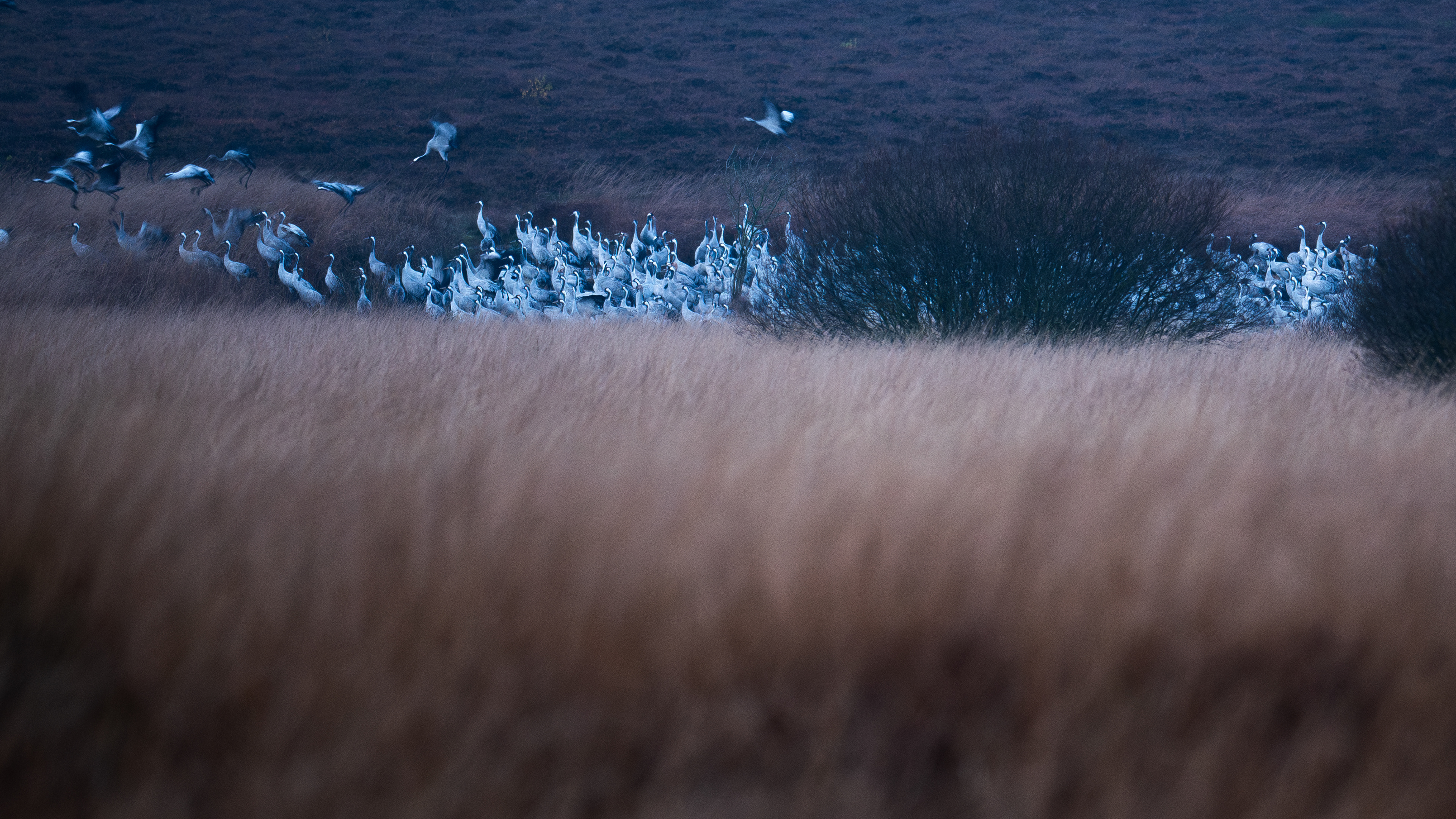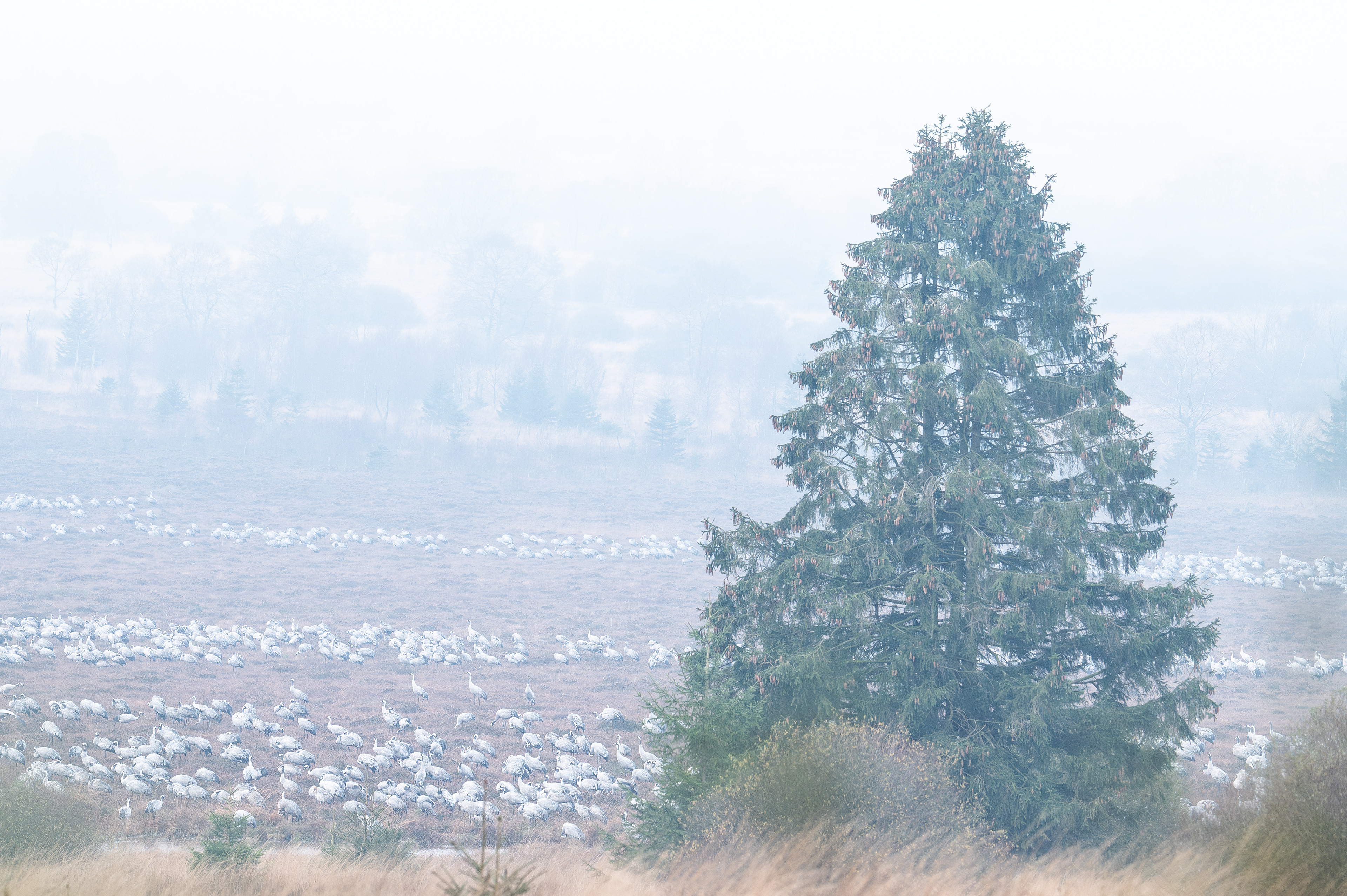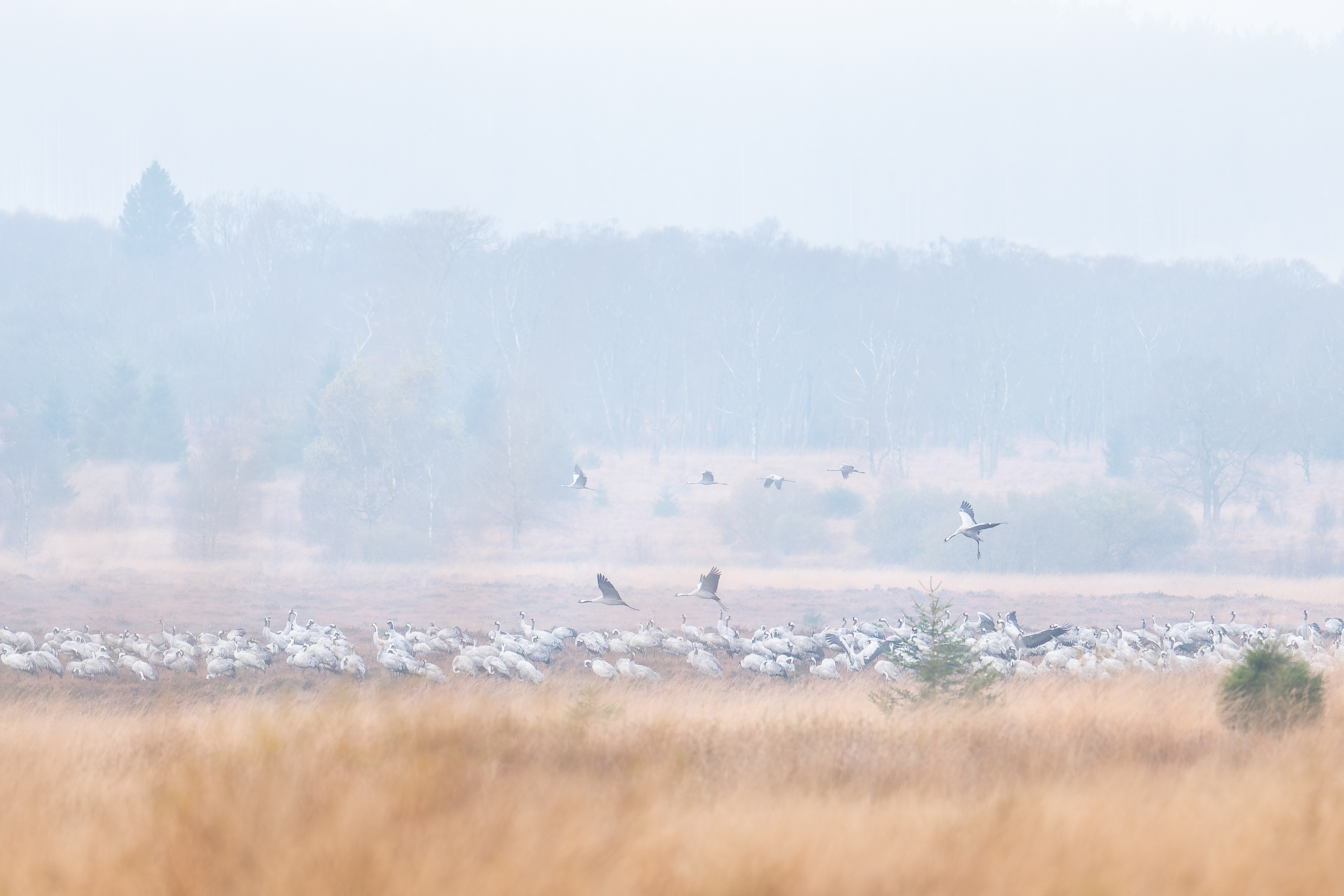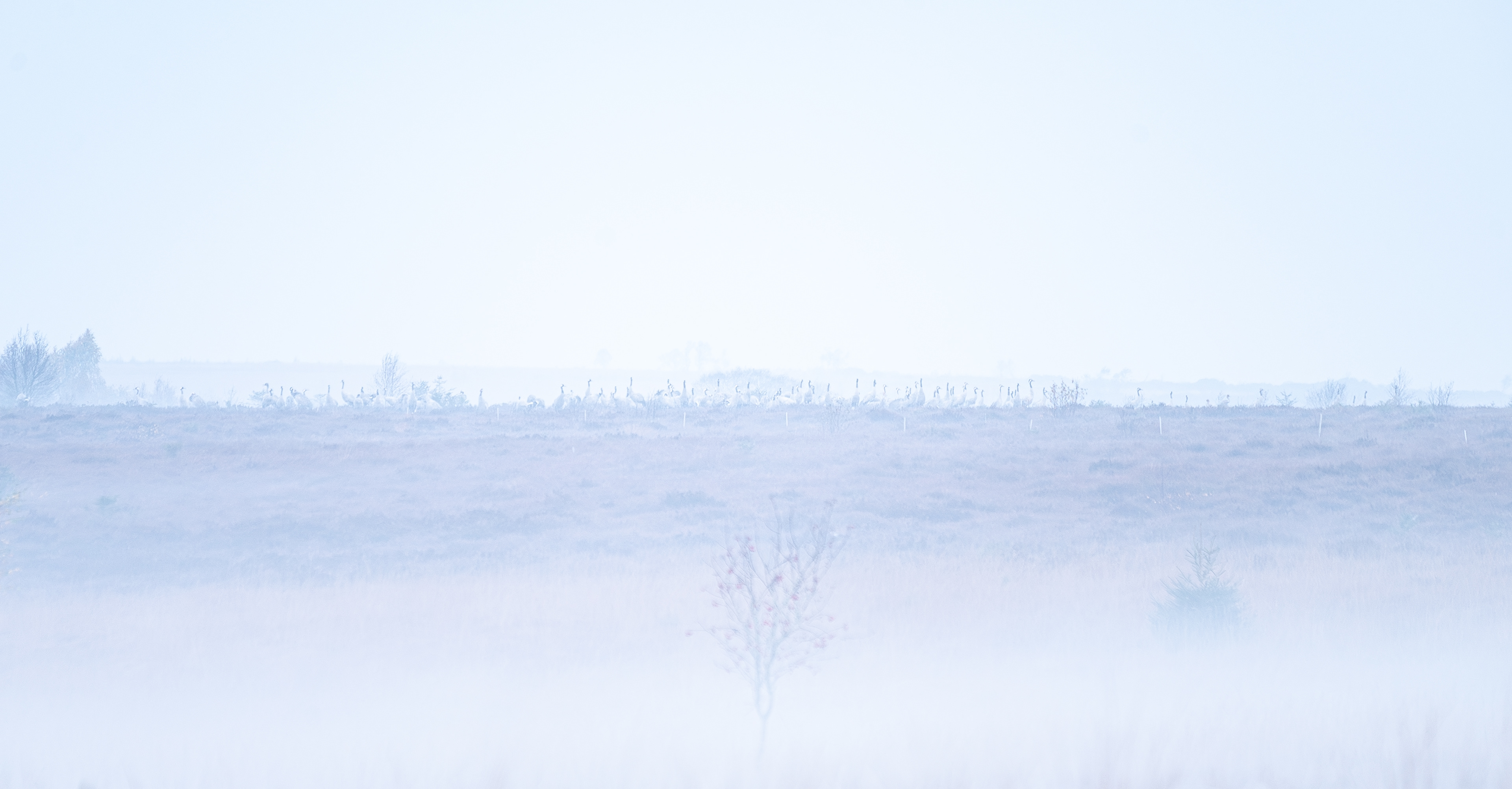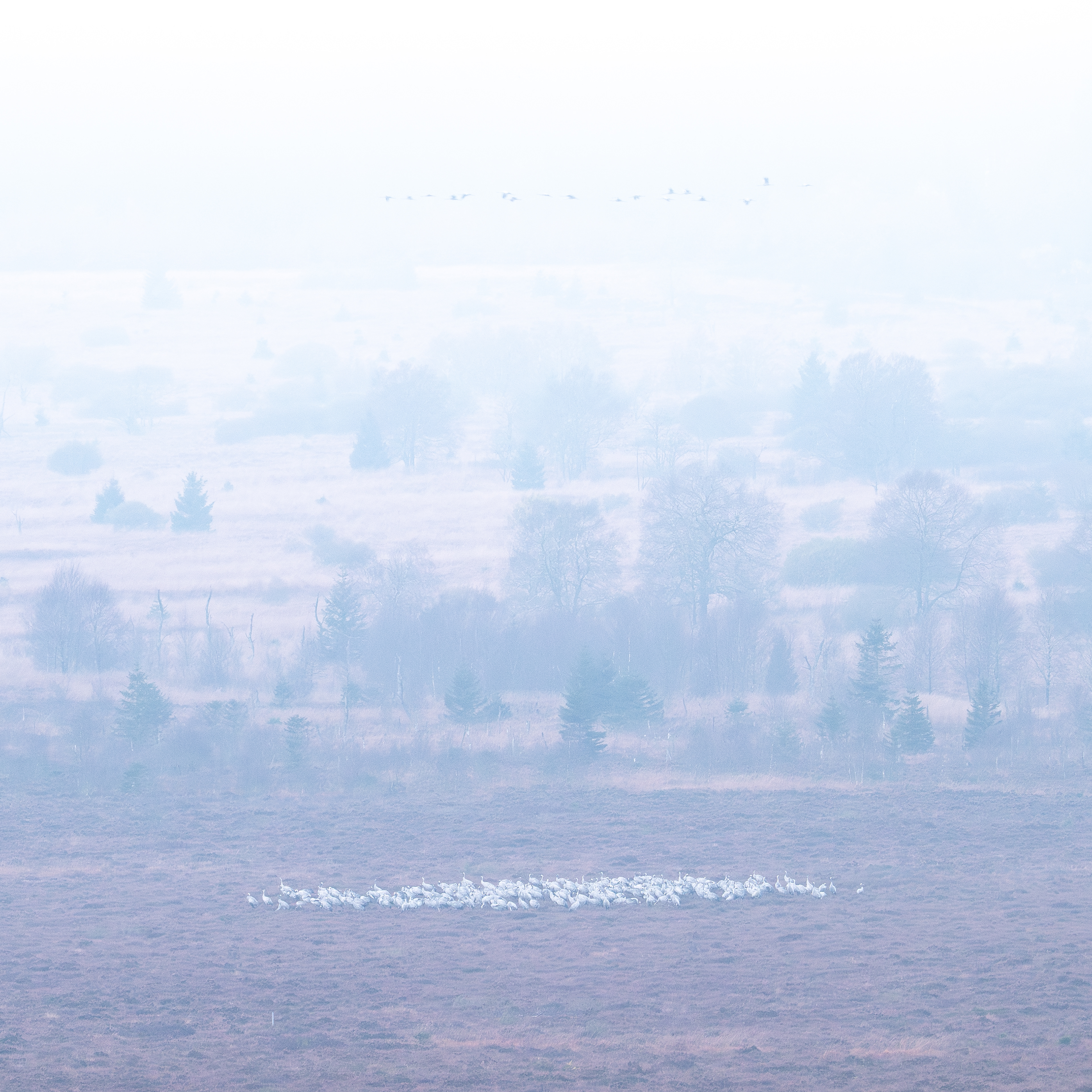Trumpeting Breaks the Silence
It's 12:55 p.m. on Saturday when I see the first flock of cranes fly over. I estimate about 150 individuals. They fly in a V-formation, southwest. They always do: in a V-formation because it's energy-efficient; southwest because Lac du Der—the next stop—is 240 kilometers away in that direction.
I'm glad they're here. Finally. I quickly checked a Dutch birdwatching website in the morning to see if any cranes were coming my way. That can go two ways: either you find out nothing is coming your way and have to keep wandering aimlessly through the High Fens, or you get good news… and I got good news! A few flocks had been spotted over the Netherlands, and the wind was favorable.
Besides, I'd already done plenty of wandering. The past two days had been dull, gray, and chilly. It remained dull, gray, and chilly, but the trumpeting of the cranes pierced the melancholy landscape.
For the next few hours, the flocks of cranes continued to fly overhead: 350, 600, 140, 700… it went on and on. I soon lost count. The lovely thing about cranes is that they fly overhead with such a loud call. For me, that's the last song before the winter half-year begins. From the moment the cranes have flown over, I realize that darkness briefly triumphs over light. In March, when the cranes fly north again, they trumpet loudly like lackeys, announcing the return of spring.
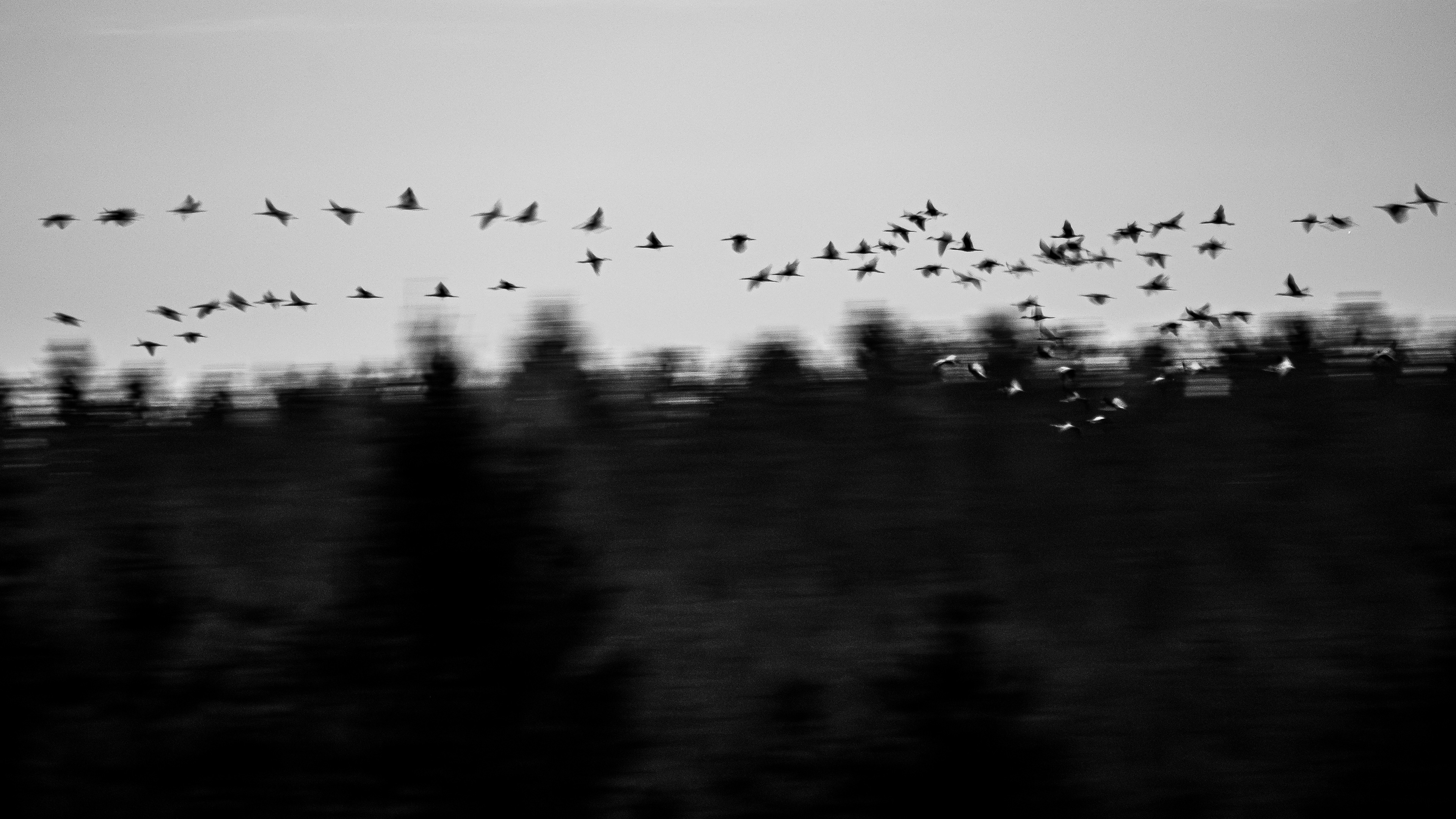
From Far and Wide
The lion's share of these cranes comes from Scandinavia. They leave in September, when it gets too cold for their toes. They then fly first towards Rügen or to the peaty agricultural areas near the German-Polish border, where they regain their strength before continuing south.
Some fly towards the Puszta of Hungary, while others head to Diepholz. This happens sometime in October. Once again, the cranes feed on the corn and grain fields. When the cold catches up with them here, too, they fly on again.
They prefer to do so with a northeasterly wind, so they arrive at Lac du Der without too much difficulty. This lake provides a roosting site for tens of thousands of cranes. During the day, they visit fields again. After an extended stopover here, they fly further south—over the Pyrenees, past the land of Don Quixote—until they find their favorite winter destination in Extremadura. More and more cranes seem to be realizing that winter is ending in northern Germany, and they are increasingly wintering near Diepholz or Lac du Der in France.
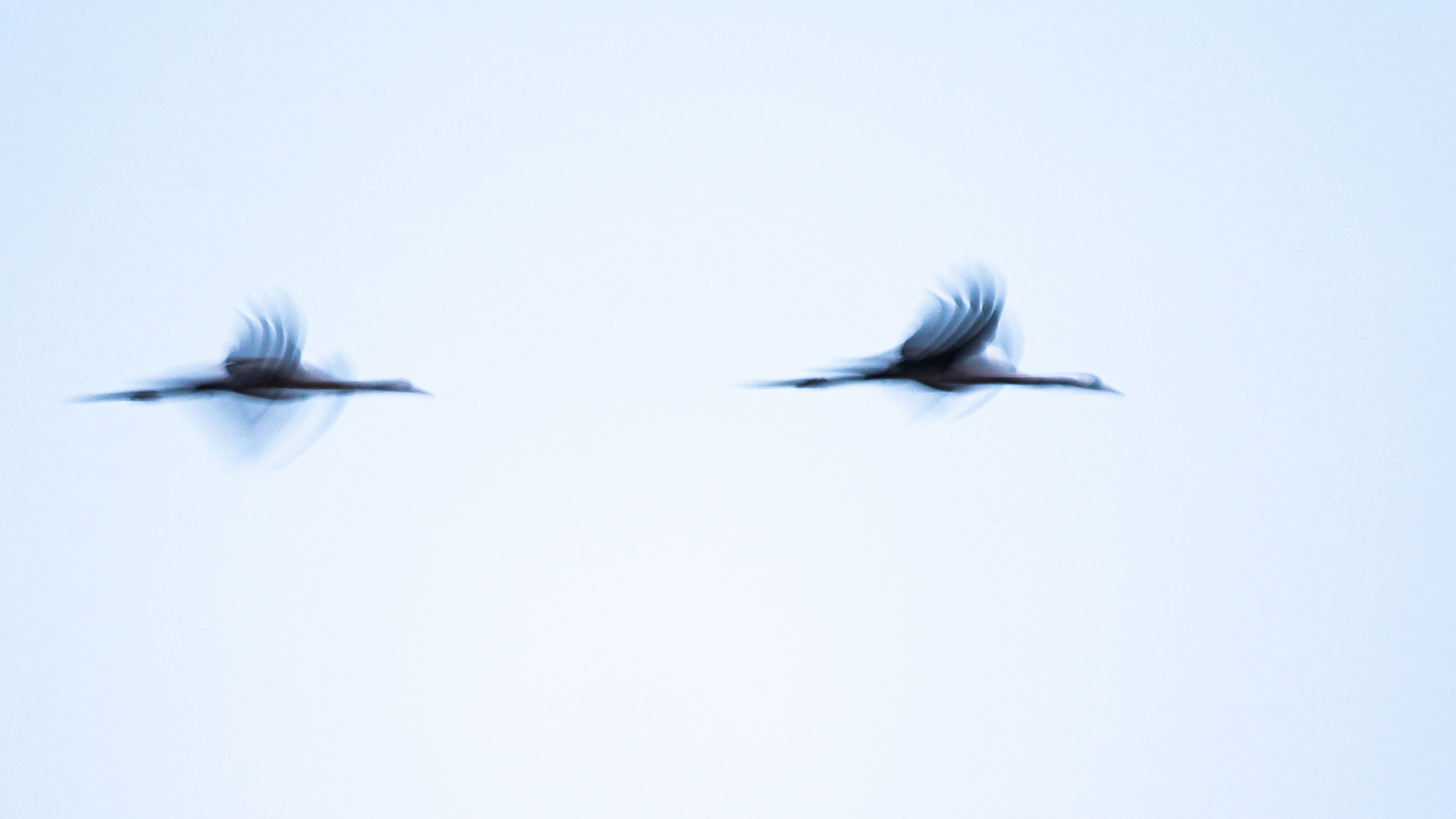
Sleeping with Eyes and Ears Wide Open
The day is drawing to a close, and the cranes keep coming. Besides the loud trumpeting of the adults, I also hear the endearing calls of the first-year birds. They are learning the long journey by following the adults.
I also start to notice something else: the cranes are no longer flying solely southwest. More and more birds are tangled in the sky. Most seem to be heading toward the Fagne Wallonne, the largest peat bog complex within the High Fens.
The low-hanging clouds are visibly disturbing the cranes. This can only mean one thing: large numbers will choose to spend the night in the bogs. Exactly what I'd hoped for.
Two years ago, I had the privilege of witnessing the crane migration, and I still remember the spot where I saw the overnighting birds depart. I hurry there as best I can with my heavy backpack. Hopefully, they'll sleep in the same spot.
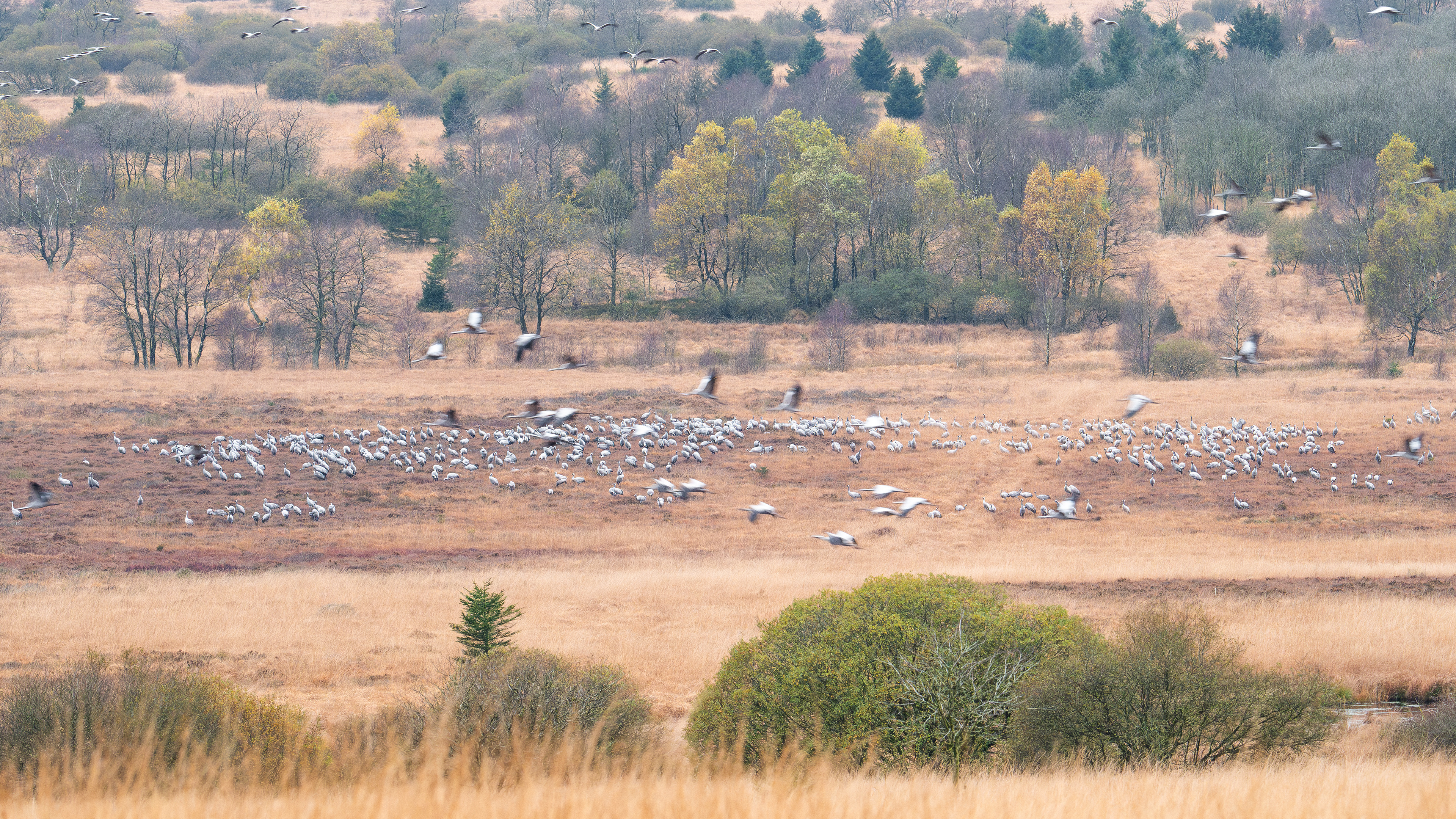
Arriving at the roost, I see several thousand cranes: a sublime sight, surrounded by a heavenly din. A male hen harrier crosses the landscape in silent flight. The cranes come flying in, calling loudly. This bodes well for tonight and tomorrow morning. I won't get much sleep — a few thousand cranes might keep me awake.
I settle down between two trees in my hammock. What a pure experience!
The next morning, I wake to the now-familiar din. Yes, they're still there! I quickly pack up my things. Roughly estimated, about five thousand cranes have spent the night before me in the fens. Further into the mist, I can see a few more groups. The fog lingers, so the great exodus doesn't begin until around ten o'clock.
Gone is the noise; welcome, silence. Every so often, this silence is broken by a flock of cranes or by a stray bird that has lost its companions. Until March, the Fens are a chilly, gray place — unless it snows. Then it's a winter wonderland. Then I'll be back.
